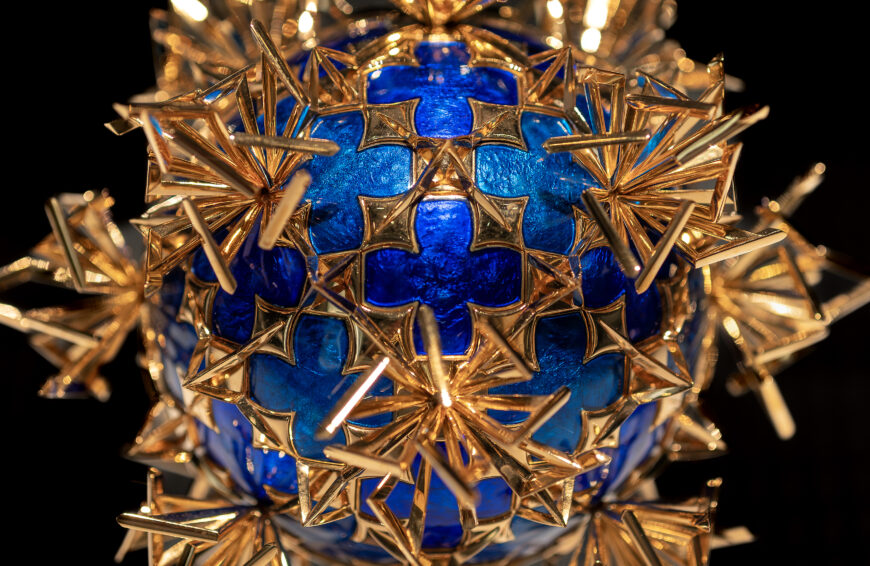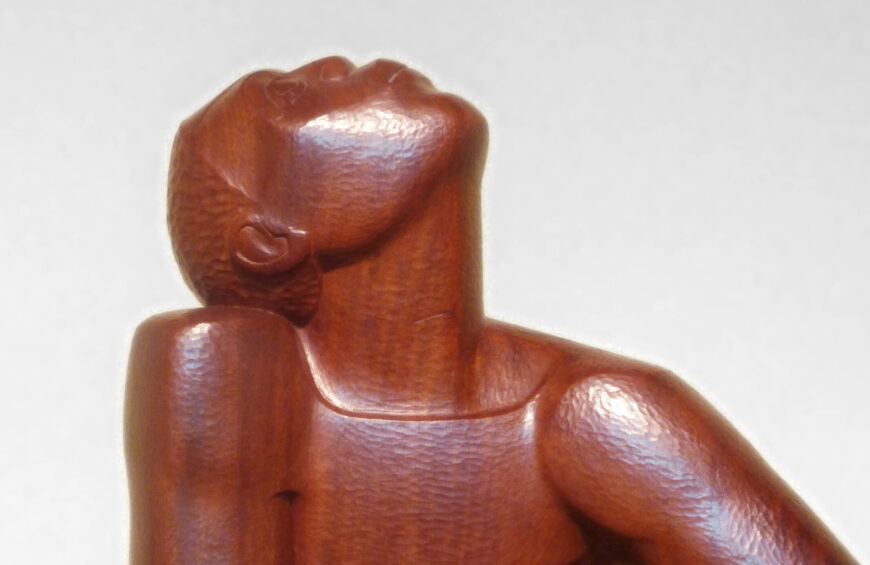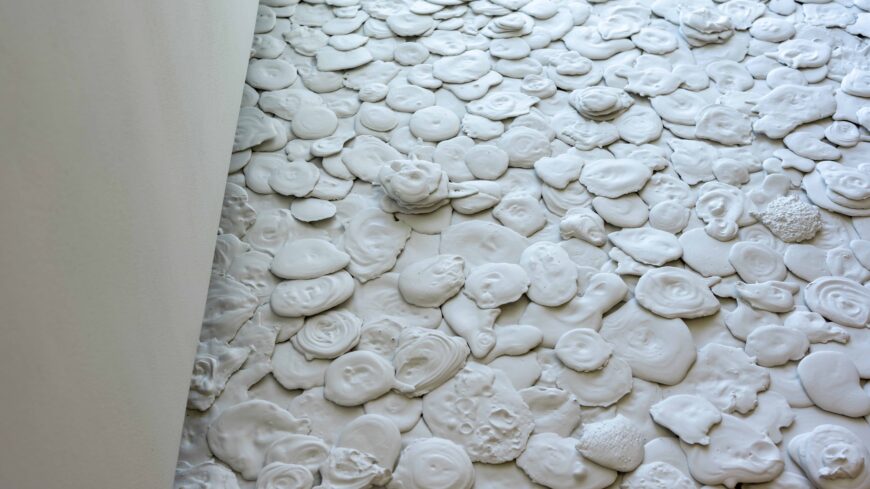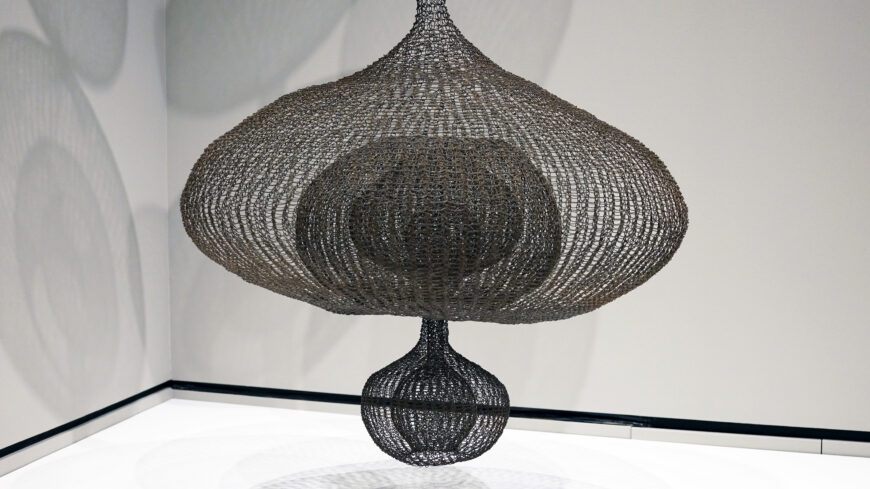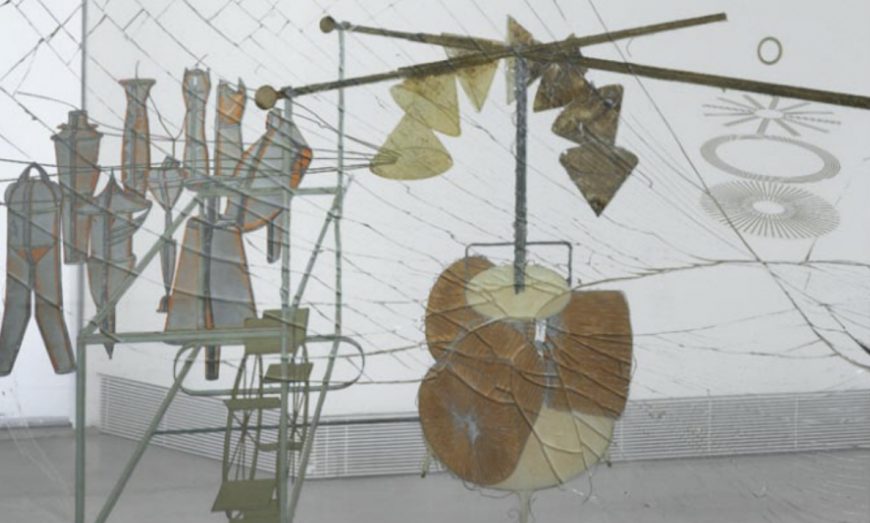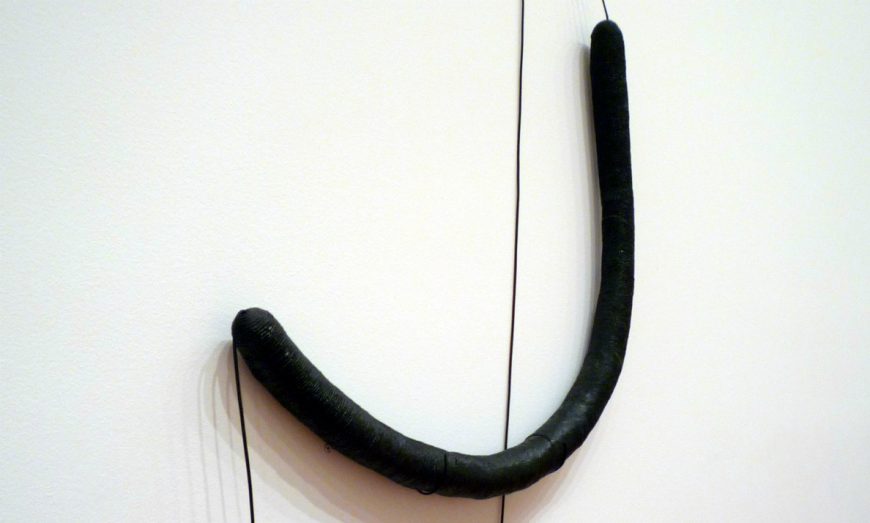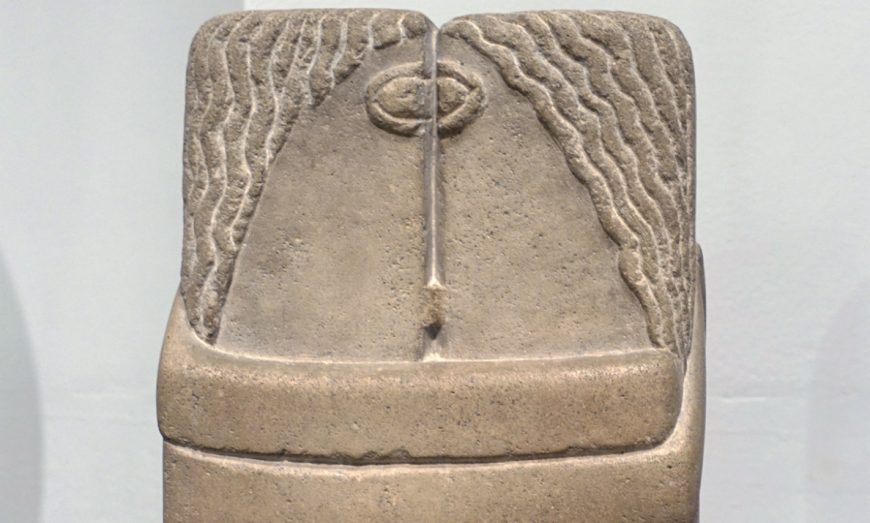Eva Hesse, Untitled (Rope Piece), 1970, rope, latex, string, wire, variable dimensions (Whitney Museum of American Art, New York)
[0:00] [music]
Dr. Steven Zucker: [0:05] We’re in the Whitney Museum of American Art in New York, and we’re looking at a late Eva Hesse. This is from 1970, and like so much of her sculpture, it’s simply “Untitled.”
Dr. Beth Harris: [0:16] It’s rope hung in the corner of the room, different sizes and textures, hung from the ceiling almost like a hammock.
Dr. Zucker: [0:25] When this sculpture was made, right before Hesse died, she was only 34 years old. It was in 1970, this sculpture was still hanging in her studio.
Dr. Harris: [0:34] So part of what this work is about is the way that this can be hung in different ways. Hesse left that open.
Dr. Zucker: [0:41] We have rope that she’s handled in all kinds of different ways.
Dr. Harris: [0:44] Unraveled it.
Dr. Zucker: [0:45] Right. It remains braided in certain areas and then it’s been unraveled.
Dr. Harris: [0:49] The rope’s been treated, obviously. It’s not raw rope.
Dr. Zucker: [0:52] Right. It’s been dipped in latex, which is a material she used quite often. The latex has this wild quality. It’s almost flesh-like, slightly translucent, and a little bit rubbery. The rope is, of course, completely flexible, malleable, but with the latex coating, it becomes a little stiffer. The rope does maintain some of its original turn and arabesque and arcing.
[1:14] On the other hand, we can reorganize it. That seems to me to be very much a part of the intention of the sculpture. It exists both physically and in a sense conceptually. The sculpture has its original organization, and then it can be reformed to some extent, though not entirely.
Dr. Harris: [1:31] Which is a really radical idea, it seems to me. The whole idea of art often is that artist’s intention realized in the work of art and that sense of self-expression. As soon as someone else can come in and hang it slightly differently or do something else differently to it, it seems to me that that’s a radical break with the way that we conceptualize what a work of art is.
Dr. Zucker: [1:53] Think about the art that was being made at this time, the art that she was responding to, the people that she was spending her time with, people like Donald Judd and others. You have kind of intentionality that is absolute and a very fixed form, heavily machined industrial materials that can’t be changed in any way.
Dr. Harris: [2:10] It’s hard not to tie some things that we see here back to the fact that she’s a woman, that she makes something that’s more malleable. If we think about coming after Abstract Expressionism, maybe there’s some anti-heroic movement against the heroicism of Jackson Pollock.
Dr. Zucker: [2:31] Who’s certainly quoted here in some very direct way.
Dr. Harris: [2:35] All those drippy looking lines.
Dr. Zucker: [2:35] Yes, absolutely. That’s really interesting. Clearly, the art history criticism written about Hesse gives her that intentionality. She is opening up these issues of what it means to be a woman and an artist in an intensely male environment in the art world in New York in the 1960s and 1970s.
[2:52] This will have an enormous impact on later artists, I’m thinking about Kiki Smith and others. She’s really brilliant in the way that she has found a means to represent the physical, the body, in a way that is not literal but metaphoric and visceral.
Dr. Harris: [3:06] It has a feeling almost of being intestines that have been taken out of the body and handled and manipulated. There’s something that feels like innards here that, I think, speaks to what will be a real engagement on the part of feminist artists in the 1970s with the body. For all its draping and its recalling of Jackson Pollock’s drips, we have a really complicated work.
Dr. Zucker: [3:31] This really fascinating visual web.
[3:33] [music]


